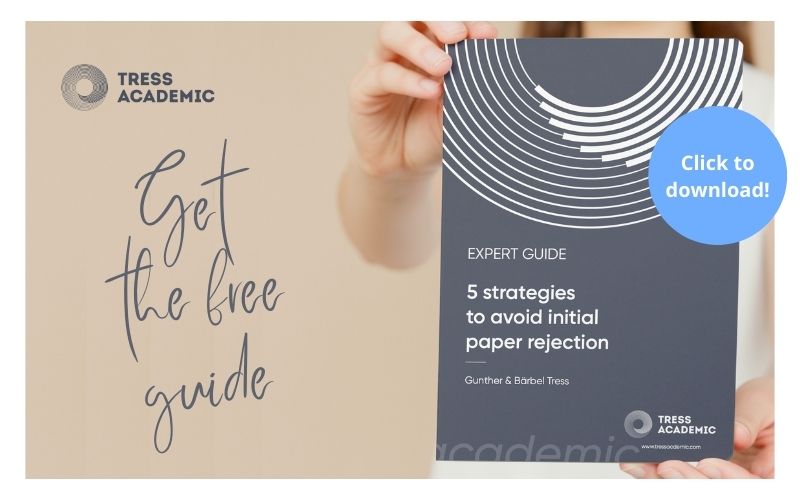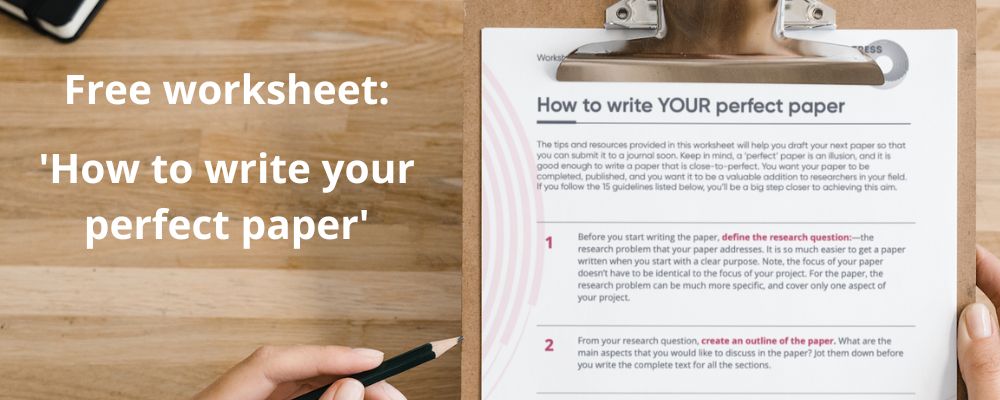Do you want to know how to write a perfect paper? What does a perfect paper look like? What is it doing differently? How is it written? And what topics should such a paper cover? Is it written by a genius? In this post, we will shed light on what a perfect paper really is, and how you can create yours.
“Do you have an example of a perfect paper?” is one of the most frequently asked questions in our paper-writing trainings. “I just want to see what a perfect paper looks like” is often the justification for the request.
You probably feel the same. Do you also sometimes think—when drafting a paper or when completing a manuscript—that “my paper is ok, but it’s not perfect!” Obviously you want it to be perfect, but have no idea what to do differently to make it perfect.
Okay, okay, we understand: You’re really interested in seeing a perfect paper so you can know the recipe to bake one yourself. Well, with the question for the perfect paper asked so often, we also became interested in it, and thought about what we can offer to the discussion. And so, here we’ll provide a list of possible ingredients, the baking instructions, a warning, and a bag of confidence. Let’s get started with this recipe to success!
Why strive for perfection?
Let’s be realistic; academics are high-achievers. On your educational path and your career up to now, you’ve been a high performer, otherwise you probably wouldn’t be where you are and wouldn’t do what you do. You’re interested in how things work and why, you want to understand it all,and you’re curious. These characteristics have helped you enter science and have motivated you to start an academic career.
Performing at a high level can make you a perfectionist because you’re overly critical of yourself and have excessively high standards. You’ve learned that it is good to deliver high quality, it is rewarding, and you’re determined to live up to these expectations. You probably don’t want other researchers to find out your research is only mediocre.
Striving for perfection seems to be an integral trait to researchers. That’s good because you show that you care about the quality of the work you do. But perfectionism can also be a dangerous trap—Damien (2016) calls perfectionism the trap of academic success. Perfectionism can hamper your ability to learn and make progress.
If you feel that one aspect or outcome of your research—e.g. your latest manuscript—is not perfect, then you might not consider it good enough to show to peers, or submit for publication. In reality, the manuscript might not be perfect, but is probably good enough for other researchers to benefit from. Or, it may even inspire them to develop an idea on how to improve your thoughts and your work, and thus bring science ahead.

Perfect papers don’t exist!
Yes, that’s true! We don’t show perfect papers in our courses because we believe there are hardly ever perfect papers, if there are any at all. Of course, there are many great papers out there. We’ve read a whole lot of papers in our research fields and others where we’ve thought they’re close to perfect—but perfectly perfect? Probably not!
What makes the perfect paper?
In our quest for the perfect paper, it became more and more difficult to define what makes a paper perfect. Is it the way it is written? Or the fact that it was seamlessly published, hardly requiring any revision after peer-review? Or is it a paper that is widely read? Or do citation counts say something about its perfectionism? Or is it written by a ‘big shot’, a close-to-perfect author? Would the paper’s perfect characteristics be recognised by any academic reader, or by some selected experts within a specific field? Would it perfectly suit a specific purpose, or is perfection a quality in itself?
In the many rounds of discussion we’ve had with the students in our courses, we’ve learned that the perfect paper as such probably does not exist. But for every context and every specific situation, a paper can serve a perfect purpose and plays a perfect role.
Instead of chasing the perfect version of your paper—wasting time, energy, and lots of goodwill on this hunt—you’re better off accepting that there might not be a perfect version of your paper and there doesn’t need to be!
Don’t let striving for perfectionism hinder you in sharing what you’ve done! Don’t wait to submit your paper until it’s perfect. You’re a high-achiever because you learned and studied how things work. Learning doesn’t stop at any stage in research—there might occasionally be someone around who has a better idea than you, or knows how to make your stuff better. That’s the way we progress in science—don’t be scared of it.
So let’s focus on how to make your own paper as close-to-perfect as possible!

How you can create your own close-to-perfect paper
For us, the question is not how you can write a perfect paper, but a paper that feels perfect for YOU. Such a paper is a manuscript that you’re proud of and provides a valuable and relevant addition to your research community.
Perfect papers may exist in your dreams. In reality, many papers are far from perfect but, nonetheless, are submitted, published, read, cited and, contribute to their fields. And if you manage to create such a paper as well, why shouldn’t we call this a close-to-perfect paper for your specific situation?
We highly recommend you stop chasing perfectionism, but rather go for a good paper that gets published and read. It might be much better for you—and also your field and your peers—if you publish one, two, or three papers that are close-to-perfect instead of waiting until one paper is perfect. If you manage to get these one, two, or three papers published, then we would consider them YOUR perfect papers.
To help you on the way to YOUR perfect papers, we’ve created a free worksheet with lots of suggestions and tips. Download “How to write YOUR perfect paper” now and get started.

Relevant resources:
- Free worksheet “How to write YOUR perfect paper”
- Blog post #23: What to do if my co-authors don’t contribute?
- Blog post #62: Twenty things you should know when writing a journal paper
- Blog post #69: What a cucumber taught me about perfectionism
- Blog post: #79: 5 decisions that make writing your paper so much easier
- Blog post #91: Find the right journal for your paper following these 8 steps.
- Blog post #96: Plagiarism and how to avoid it.
- Blog post #104: Five criteria every academic author should fulfil
- Damian, L. 2016. The trap of academic success: perfectionism. Blog on Learning and Development.
More information
Do you want to successfully write and publish a journal paper? If so, please sign up to receive our free guides.
Photo by American Heritage Chocolate on Unsplash
© 2021 Tress Academic
